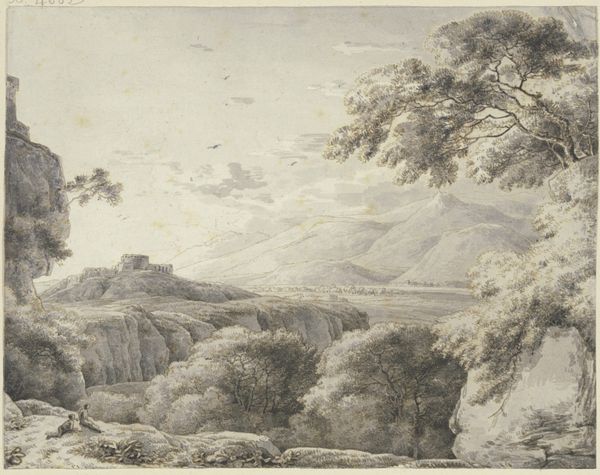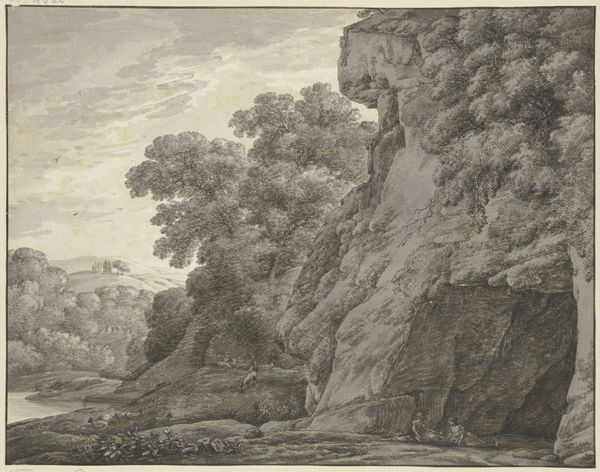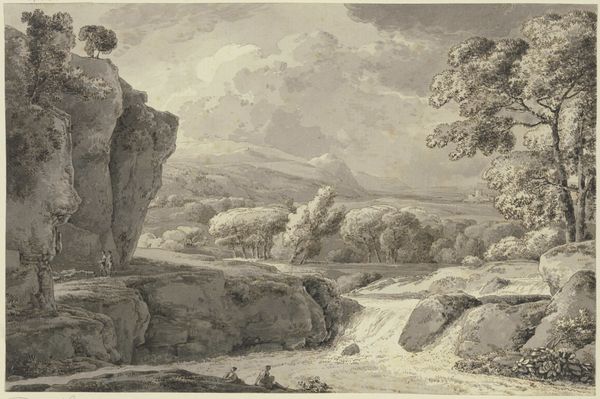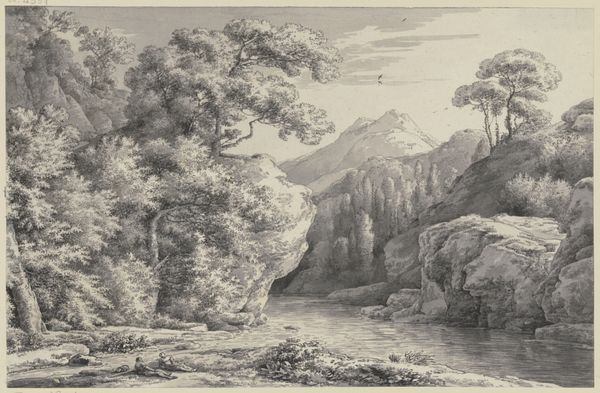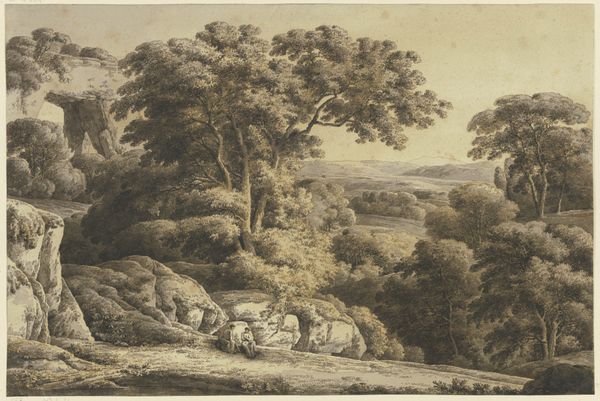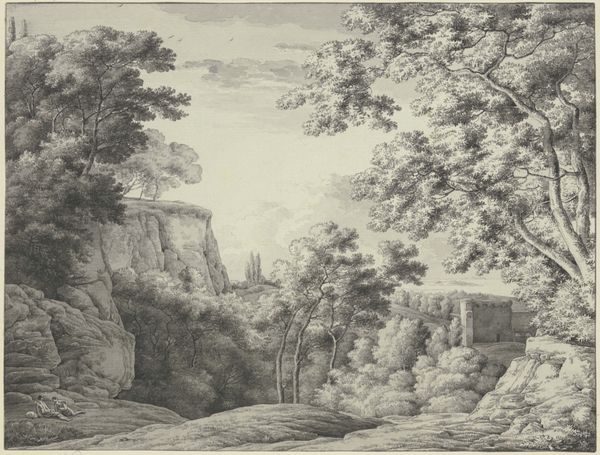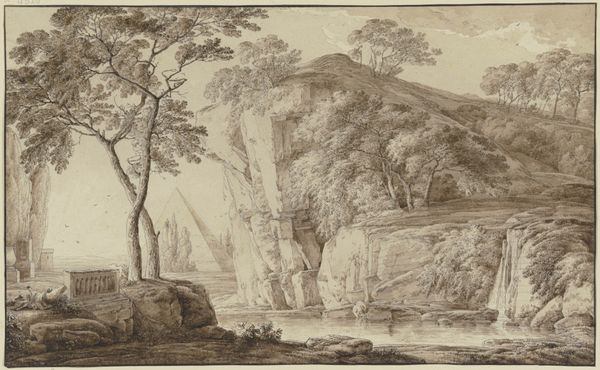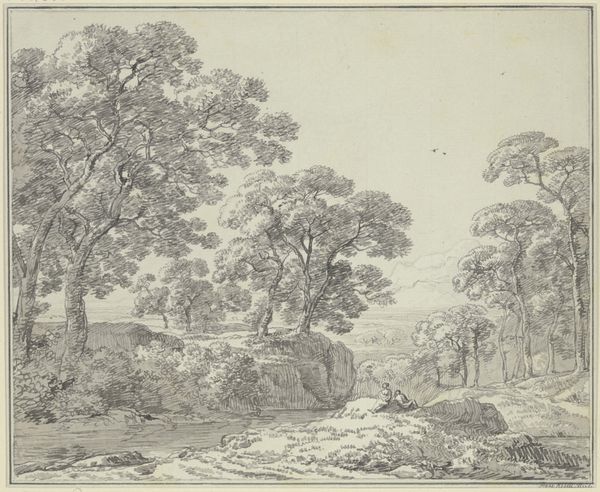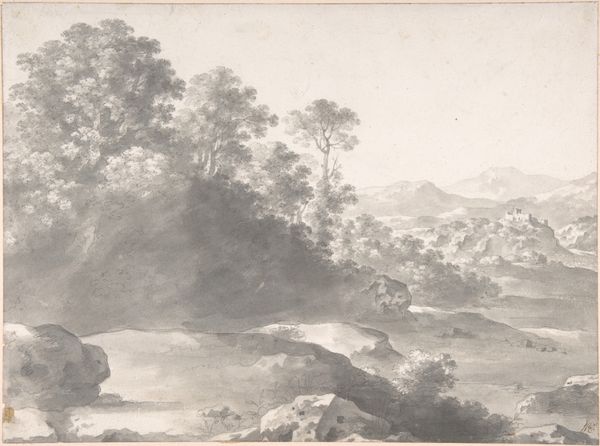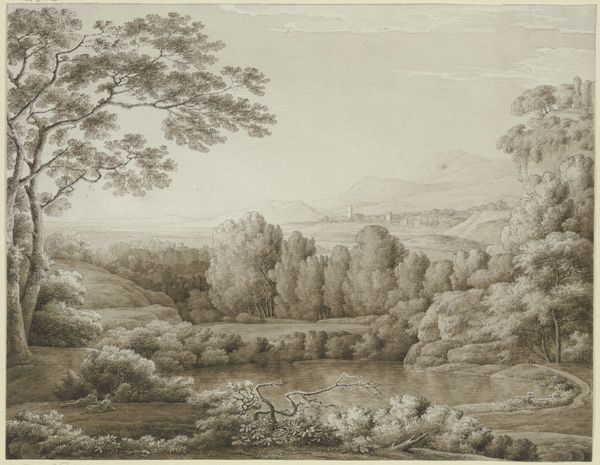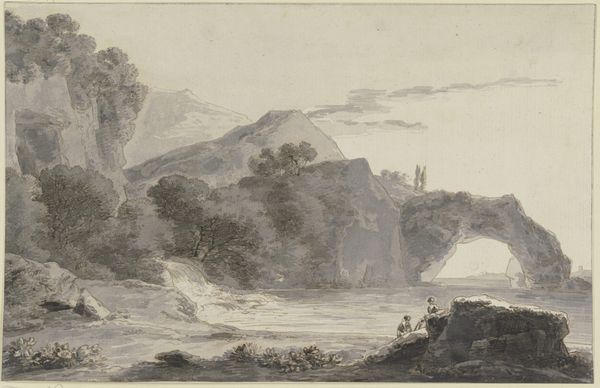
drawing, dry-media, ink, pencil
#
drawing
#
landscape
#
dry-media
#
ink
#
pencil
Copyright: Public Domain
Curator: Franz Kobell's "Gebirgslandschaft mit Herde und Wasserfall" offers a fascinating study in contrasts, executed with ink and pencil. What strikes you initially about this landscape? Editor: There's an interesting dichotomy; a serene shepherd tending his flock positioned near a violent waterfall. Is this perhaps commenting on humanity’s relationship with the natural world, this assumed mastery over untamed nature? Curator: Perhaps, but note how the composition directs our eye through careful layering of forms. The jagged rocks on the left lead to the smooth, open pasture in the center, punctuated by the dramatic downward thrust of the waterfall on the right. The tonal variations, achieved through skillful shading with both pencil and ink, create depth. The contrast is in the medium and execution, not simply a narrative contrast you may find so enticing. Editor: But doesn’t the drawing elicit an immediate sense of pre-industrial pastoral life and privilege? Kobell completed this landscape free of constraints due to the inheritance left to him by his father, and then secured the highly influential position of court painter to Elector Karl Theodor’s cabinet in Mannheim. Was the subject selection simply driven by aesthetic motivations? Curator: Focusing on external factors risks missing the inherent artistry. Look at the economy of line used to describe the trees; their delicate fronds a counterpoint to the solid mass of the rocks. Note also the atmospheric perspective created by the fading detail in the distant landscape. Editor: Granted, technically it's superb, but what was Kobell attempting to communicate? The seemingly arbitrary composition—juxtaposing active movement against the stillness of the shepherd—appears jarring without additional context. Curator: Sometimes the aesthetic experience IS enough. The artwork speaks for itself in the precision of its details, the elegance of its lines, and its masterful command of light and shadow. Not everything must serve some greater purpose or be contextualized to be of value. Editor: Even so, the sociopolitical dimensions must also be acknowledged if one seeks a well-rounded reading of its possible significance within its historical moment. It would benefit today’s public to reflect on these issues while standing here at the Städel Museum. Curator: Well, I appreciate the formal elegance and consider it a beautifully realized landscape drawing.
Comments
No comments
Be the first to comment and join the conversation on the ultimate creative platform.
